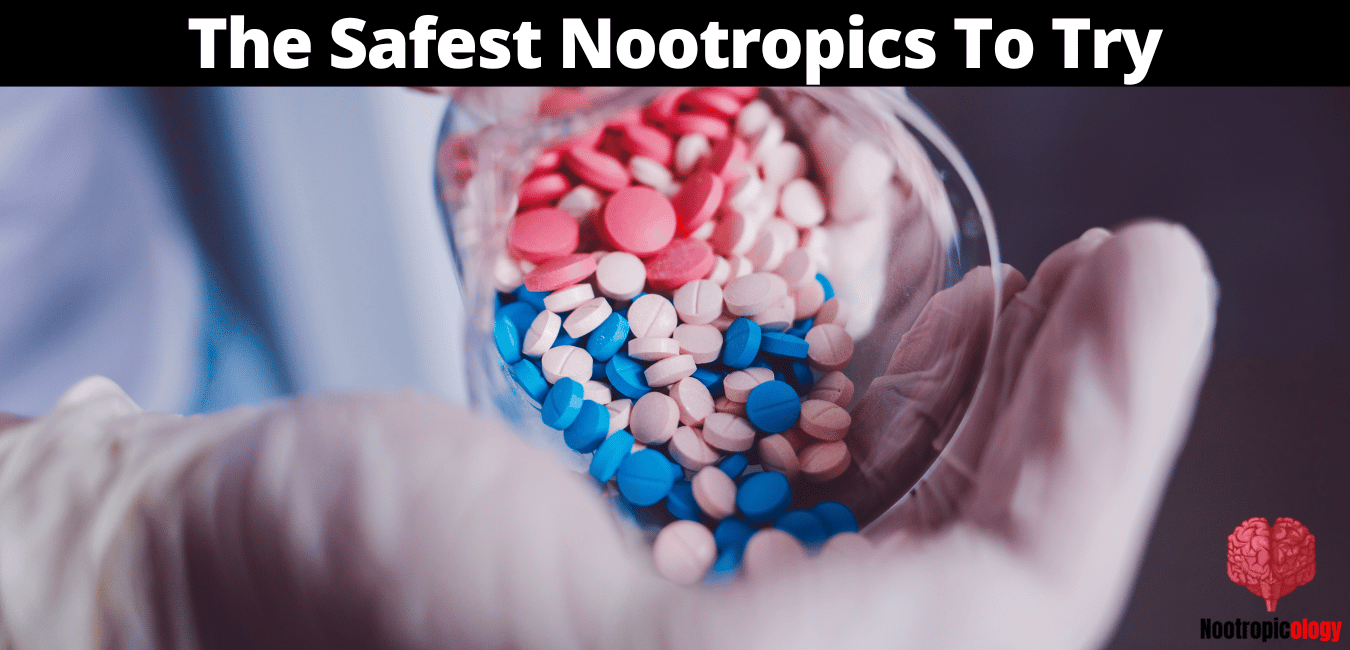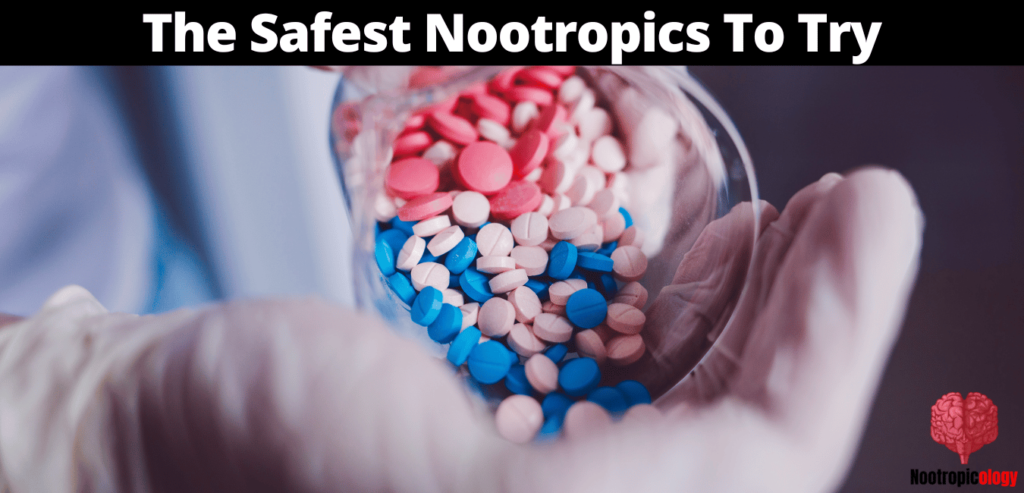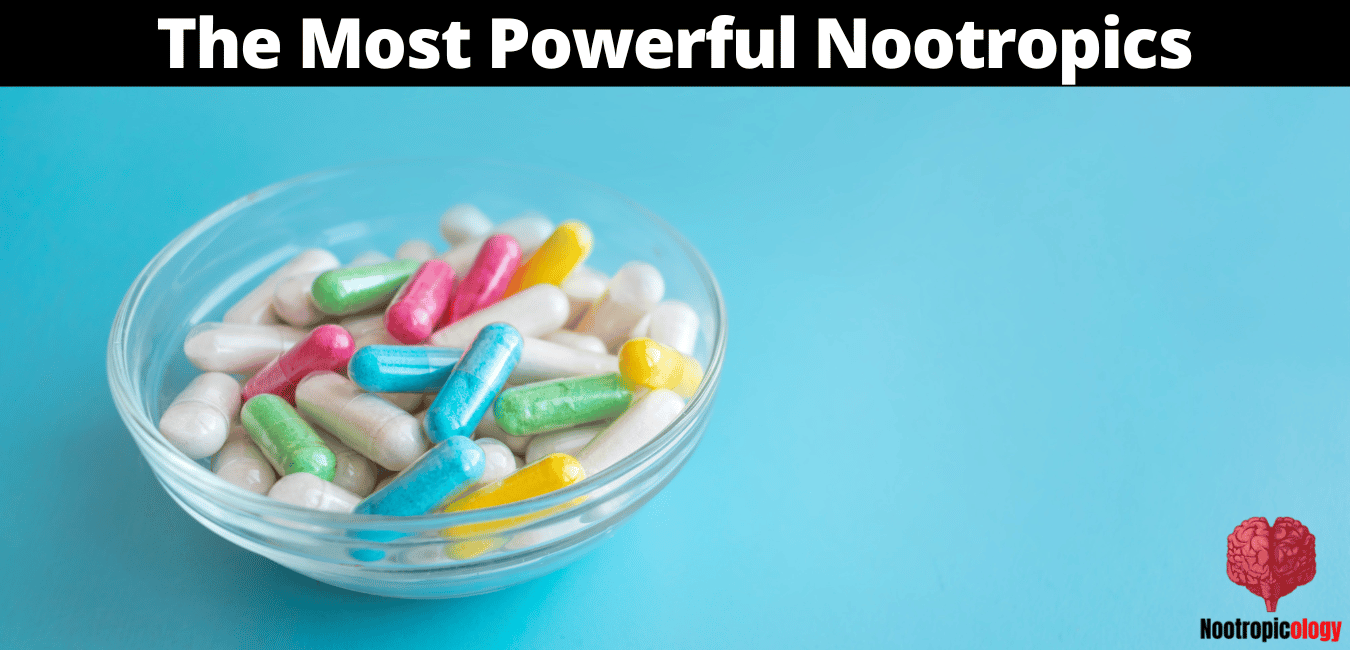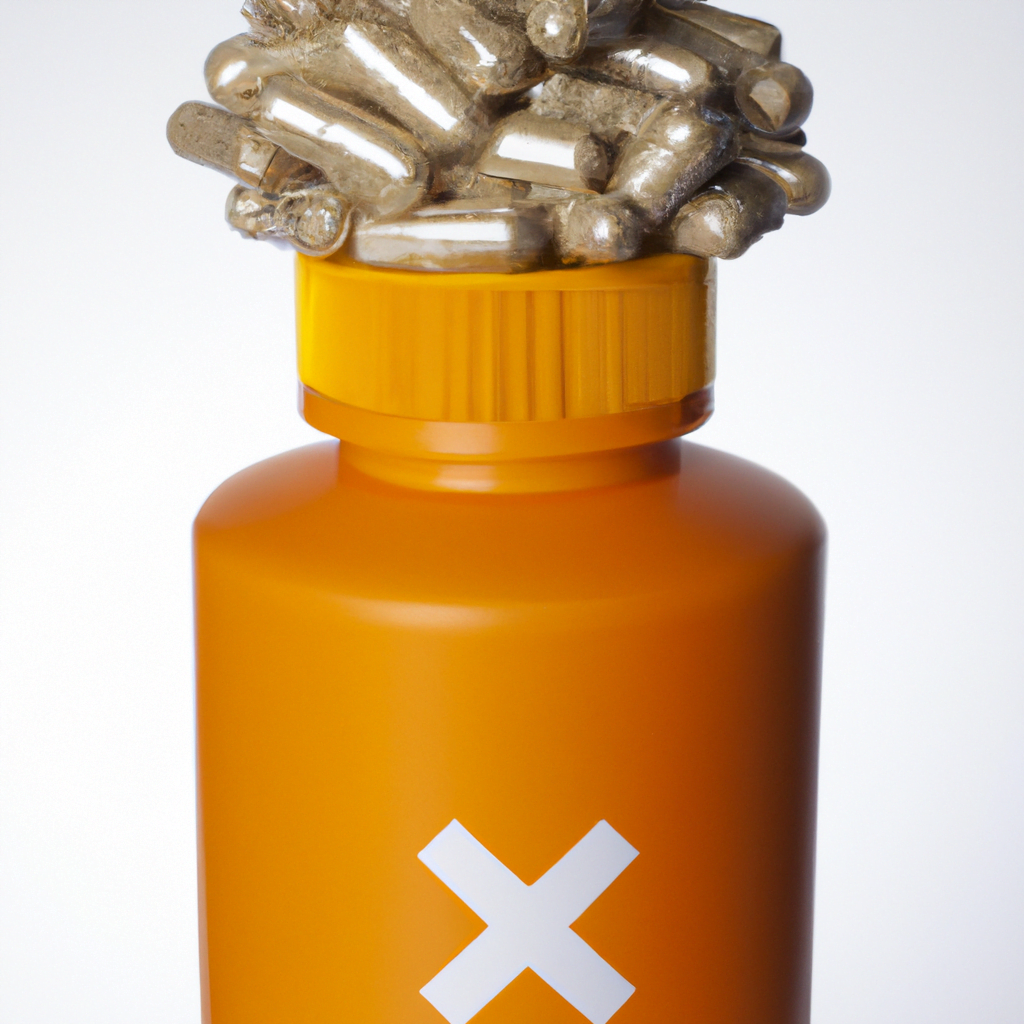
In this article, I'll examine the 8 safest nootropics to try without risk. I'll cover the benefits, what you can expect from each one, and what to be aware of before trying any nootropic.
As the pace of life continues to accelerate, there is an increasing demand for solutions that can help individuals stay focused and productive in the face of ever-growing challenges.
Nootropics are a category of cognitive supplements that have been gaining traction in recent years due to their ability to improve focus, memory, and other mental abilities. A market analysis estimates that the global nootropics market size will reach USD 29.24 billion by 2028 with a compound annual growth rate (CAGR) of 15.0%.[1]
Searching for the right nootropic to try can be daunting, yet with this guide, you will discover 8 of the safest and most reliable options.
Allowing you to get started on your journey into cognitive enhancement without putting yourself at any risk.
The 8 safest nootropics to try without risk, according to scientific evidence, are:
- Nooceptin
- Vyvamind
- NooCube
- Mind Lab Pro
- L-Theanine
- Caffeine + L-Theanine Stack
- Creatine
- CDP-Choline
1. Nooceptin
With Nooceptin (also known as FDG-117), you can maximize your abilities and access heightened cognitive performance.
Nooceptin is an innovative nootropic formula that features 7 distinct ingredients designed to stimulate brain power, bolster energy levels, and inspire a steadfast clarity of thought.
Let science work its magic on you and unlock the exceptional capabilities that lay within with this nootropic blend painstakingly formulated to increase your concentration and performance.
The 7 nootropic ingredients in Nooceptin are:
- Citicoline (as CDP Choline aka cytidine 5'-phosphocholine, sodium)
- Rhodiola Rosea 150 mg Extract (3% rosavins & 1% salidroside)
- Bacopa Monnieri Extract - 150 mg (40% bacosides)
- L-Theanine (L-γ-glutamylethylamide) - 200 mg
- Ginkgo Biloba Extract - 100 mg (24% ginkgo flavone glycosides & 6% terpene lactones)
- Lion's Mane Mushroom Extract - 400 mg (30% polysaccharides)
- Panax Ginseng Extract - 200 mg
Lion's Mane Mushroom Extract (H. erinaceus), in particular, has been shown to improve cognitive functions. One study found that taking supplements containing the fruiting body of H. erinaceus for 12 weeks significantly improved cognitive functions.[2]
Saitsu, Yuusuke, et al. conducted 3 tests: Mini-Mental State Examination (MMSE), Benton visual retention test, and Standard verbal paired-associate learning test (S-PA).
Results showed that MMSE alone demonstrated that oral intake of H. erinaceus positively affected cognitive functions, such as memory, attention, language ability, etc.
Nooceptin Pros
- An all-natural nootropic blend containing 7 ingredients
- Safe and ideal for people who want to access heightened cognitive performance
- Uses scientifically-proven ingredients that can support cognitive functions
- You get more bang for your buck
- No prescription needed
Nooceptin Cons
- Not ideal for people on a tight budget
Nooceptin in Summary
Containing a blend of nootropic ingredients that work synergistically to stimulate cognitive abilities, Nooceptin is a dietary supplement that can provide substantial performance-enhancing results without any harsh side effects. It is ideal for people looking to maximize their mental performance without any risks.
2. Vyvamind
Unlock the limits of your mental prowess with Vyvamind (NSV-313) – an evidence-based nootropic blend developed from 6 powerful natural ingredients in perfect convergence.
Tap into this revolutionary cognitive enhancer and take on any challenge you face, experiencing improved clarity and focus that can last for hours giving long-term benefits extending to months.
Vyvamind contains the following nootropic ingredients:
- Vitamin B6 (2.5 mg)
- Vitamin B12 (50 mcg)
- L-Tyrosine (300 mg)
- Citicoline (CDP Choline) - 200 mg
- L-Theanine (150 mg)
- Caffeine Anhydrous (75 mg)
Caffeine stacked with L-Theanine has been shown to deliver improved cognitive performance without the annoying side effects of consuming too much caffeine.[3] The perfect recipe of the two in Vyvamind enhances their effects while reducing any jitteriness caused by caffeine on its own.
Vyvamind Pros
- It contains 6 scientifically-proven nootropic ingredients
- The perfect blend of L-Theanine and Caffeine for improved cognitive performance
- No harsh side effects due to low caffeine levels
- Ideal for long-term use
- No prescription needed
Vyvamind Cons
- Shipping times may take up to 2 weeks to the EU
Vyvamind in Summary
Carefully crafted to deliver maximum cognitive performance, Vyvamind is an innovative nootropic supplement that contains 6 scientifically-proven ingredients in perfect synergy. It can improve focus and clarity without any side effects, making it ideal for people looking to enhance their mental capabilities safely and naturally.
3. NooCube
NooCube is the latest innovative nootropic stack offering a range of impressive cognitive benefits. Containing 13 carefully selected nootropic ingredients, this advanced blend has been scientifically crafted to help you stay concentrated and energized throughout your day.
NooCube's nootropic ingredients are:
- Lutemax® 2020
- Bacopa Monnieri 12:1 (20% bacosides) 250 mg
- Huperzia Serrata (0.5% huperzine-a) 20 mg
- Pterostilbene 140 mcg
- Resveratrol 99% 14.3 mg
- L-Theanine 100 mg
- L-Tyrosine 250 mg
- Alpha GPC (Glycerylphosphorylcholine) 50 mg
- Oat Straw Extract 10:1
- Cat's Claw 4:1
- Vitamin B1 1.1 mg
- Vitamin B7 50 mcg
- Vitamin B12 2.5 mcg
Notably, Resveratrol - a polyphenol with strong antioxidant properties found in red wine and blueberries - has been added to NooCube for improved brain health.
Randomized clinical trials have conclusively shown that Resveratrol protects against oxidative stress damage[4] and is also beneficial for boosting memory recall and promoting greater cerebral blood flow - keeping your mind at its peak performance.
Noocube Pros
- Naturally-sourced ingredients
- Contains 13 scientifically proven nootropic ingredients
- Added Resveratrol for improved brain health
- No prescription needed
- Safe and effective
Noocube Cons
- The dosage of each ingredient could be higher
Noocube in Summary
With NooCube, you get 13 carefully selected nootropic ingredients in perfect synergy for maximum cognitive performance. It increases alertness, focus, and clarity with no harsh side effects or risk of addiction. Perfectly safe, NooCube is ideal for those looking to boost their mental capabilities without needing a prescription.
4. Mind Lab Pro
Mind Lab Pro is a nootropic stack synergistically formulated to boost the brain's full potential. Combining 11 natural ingredients, Mind Lab Pro offers unmatched cognitive enhancement without any unwanted side effects like jitters or crashes.
This premier blend includes key nootropic ingredients such as:
- Vitamin B6, 2,5 mg
- Vitamin B9, 100 mcg
- Vitamin B12, 7.5 mcg
- L-theanine, 100 mg
- Citicoline, 250 mg
- Bacopa monnieri, 150 mg
- Organic lion’s mane mushroom, 500 mg
- Phosphatidylserine, 100 mg
- N-acetyl L-tyrosine, 175 mg
- Rhodiola rosea, 50 mg
- Maritime pine bark extract, 75 mg
While you strive to maintain a busy lifestyle, make sure your brain is not left behind. Feed it essential nourishment like N-acetyl L-tyrosine and Vitamin B6 to keep it at its peak performance.
One study on N-acetyl L-tyrosine found that it significantly impacted cognitive performance in challenging situations. It was observed to counteract the decreased working memory and information processing resulting from demanding environmental conditions such as extreme weather or mental workload.[5]
According to Hase, Adrian et al., this effect was attributed to its ability to restore neurotransmitter catecholamine levels in the brain, which had been depleted due to these stressful conditions.
Mind Lab Pros
- 11 natural and safe nootropic ingredients
- Contains nootropics backed by clinical research
- No jitters or crashes
- No prescription needed
Mind Lab Pro Cons
- Pricier than other blends on my list
Mind Lab Pro in Summary
Mind Lab Pro is an optimal blend of 11 natural and safe nootropic ingredients. It provides the perfect balance between effectiveness and safety, offering unmatched cognitive enhancement without any unwanted side effects like jitters or crashes. Perfectly safe, Mind Lab Pro is ideal for those looking to boost their mental capabilities without needing a prescription.
5. L-Theanine
L-Theanine (γ-glutamylethylamide) is an amino acid found naturally in green tea. It has been used for centuries as a nootropic supplement that reduces stress and improves mood.
Research has shown L-Theanine to be safe, non-toxic, and effective at improving cognitive function. It is known to increase brain serotonin, dopamine, GABA, and glycine levels to improve mental clarity and focus.[6]
Additionally, it can reduce anxiety and symptoms of depression by decreasing levels of cortisol and other stress hormones. L-Theanine works by blocking excitatory pathways in the brain while activating inhibitory pathways that help relax the mind.
L-Theanine Pros
- Readily available in supplement form
- L-Theanine is naturally found in green tea
- Safe, non-toxic, and effective
- Improves mental clarity and focus
- Reduces anxiety and symptoms of depression
L-Theanine Cons
- High dosages can cause drowsiness
L-Theanine in Summary
One of the most popular nootropics on the market, L-Theanine is an amino acid found naturally in green tea. It has been used for centuries to reduce stress and improve mood. Research has shown it to be safe, non-toxic, and effective at improving cognitive function. Perfectly safe for long-term use, L-Theanine is a great choice for those looking to boost their mental powers without any risks.
6. Caffeine + L-Theanine Stack
Caffeine is the most widely consumed psychoactive substance in the world. It works by blocking adenosine receptors in the brain, which causes an increase in alertness and energy levels.[7]
However, caffeine can also lead to restlessness, anxiety, jitters, and insomnia when taken in large doses or on an empty stomach.
But stacked (combined) with L-Theanine, caffeine can be a powerful nootropic supplement that can help improve focus and mental performance without unwanted side effects.
L-Theanine works synergistically with caffeine to give you an energized yet calm feeling, improving your concentration and focus while reducing any jitters or anxiety. Feel more awake without the usual side effects of stimulants.
Caffeine + L-Theanine Stack Pros
- Energized yet calm feeling
- Improves focus and mental performance
- Reduces jitters and anxiety
- Safe and non-toxic
Caffeine + L-Theanine Stack Cons
- It can become less effective with regular use
Caffeine + L-Theanine Stack in Summary
The Caffeine and L-Theanine stack is a powerful nootropic combination that combines the stimulating effects of caffeine with the calming effects of L-Theanine. It provides an energized yet calm feeling and improves focus and mental performance without unwanted side effects like jitters or anxiety.
7. Creatine
Commonly known in the bodybuilding and fitness world, Creatine is a supplement used to improve athletic performance. But it can also be used as a nootropic for enhanced mental functions such as improved memory, learning, focus and overall brain health.[8]
Creatine works by increasing the body’s phosphocreatine stores, which helps produce ATP, a molecule that provides energy to cells. This enhances mental energy and focus. It also increases dopamine levels, which is beneficial for memory formation.[9]
It has a robust safety profile, with no serious side effects reported making it a great nootropic for people looking to improve their cognitive performance without risk.
Creatine Pros
- Improves memory and learning
- Enhances mental energy and focus
- Increases dopamine levels
- Protects neurons from damage
- Safe and readily available in stores
Creatine Cons
- Not ideal for people with kidney diseases
Creatine in Summary
Creatine is a well-known supplement used to improve athletic performance. But it can also be used as a nootropic to enhance mental functions such as memory, learning, focus, and overall brain health. It’s safe and readily available without any serious side effects reported making it an ideal choice for those looking to improve their cognitive performance without risk.
8. CDP-Choline
CDP-choline, commonly known as Citicoline or Cytidine 5'-diphosphocholine is a compound responsible for synthesizing the phospholipids which form cell membranes.[10]
When administered orally or directly into the bloodstream, it releases two compounds, cytidine, and choline, that play an important role in cellular structure maintenance. It is known to increase dopamine and acetylcholine levels (ACh) in the brain, which helps with focus, attention span, and learning.
CDP-choline is well-tolerated and non-toxic, making it a safe option without risk.
CDP-Choline Pros
- Improves focus and attention span
- Increases dopamine and ACh levels
- Protects neurons from damage
- Safe and readily available
CDP-Choline Cons
- Not as effective as other nootropics on this list
CDP-Choline in Summary
CDP-Choline is an important source of nutrients for cell maintenance and enhances cognitive functions such as focus and attention span. It is safe and readily available without any serious side effects reported making it an ideal choice for those looking to improve their cognitive performance without risk.
What Are the Best Safest Nootropics To Try Without Risk?

According to my market research, user reviews, and scientific studies, these are the 8 safest nootropics to try without risk:
- Nooceptin
- Vyvamind
- NooCube
- Mind Lab Pro
- L-Theanine
- Caffeine + L-Theanine Stack
- Creatine
- CDP-Choline
All the nootropics on my list have been scientifically tested and proven safe and effective, so you can confidently try them without fear. However, it is always important to consult your healthcare professional before taking any of these supplements.
You can enhance your cognitive capabilities without any adverse side effects by leveraging the safest nootropics on this list. Whether you want to improve focus, boost memory, or become more productive, these nootropics will help you reach your goals without risk.
I want to make sure your journey in cognitive enhancement is safe and efficient, which is why I've only included natural nootropics that have been used by thousands of people worldwide - including myself.
With these nootropics, you can improve your mental performance without compromising safety or wasting money.
How to Choose the Safest Nootropics?
When it comes to choosing the safest nootropics, certain criteria need to be considered:
- Safety: This one is obvious. Firstly, ensure your chosen nootropic has a proven safety profile and is free from any side effects based on the available scientific literature.
- Potency: Secondly, make sure the nootropic is potent enough to provide noticeable results. That means looking at the doses and dosages recommended by experts (especially if you choose nootropic blends).
- Availability: Lastly, the nootropic should be easy to obtain through online stores or local supplement shops. This way, you’ll always have access whenever you need it.
These are the 3 main criteria to consider when choosing the safest nootropics.
If you have any kidney diseases, it is highly recommended that you speak with your healthcare professional before following my advice.
What Are the Benefits of the Safest Nootropics?
By taking the safest nootropics, you can:
- Improve cognitive performance
- Boost focus and attention span
- Enhance memory recall and learning capacity
- Increase energy levels naturally
- Reduce stress and anxiety levels
These benefits can be experienced without any adverse side effects, making these nootropics a safe and effective solution for improving mental performance.
It's worth pointing out that all of the nootropics on my list are only natural, so they're free from any harsh chemicals that can lead to side effects.
This makes any nootropics on this list great for long-term use and can be combined/stacked for better results.
What Are the Side Effects of the Safest Nootropics?
The side effects of the safest nootropics are minimal. For example, some users have reported feeling headaches and dizziness when taking caffeine-based nootropic blends like Vyvamind.
Stacking two or more nootropics can also increase side effects, so it’s important to stick to recommended dosages and not exceed them. However, given the nature of these natural nootropics, the side effects are rare, usually mild, and don’t last long.
The bottom line is that all of these nootropics have been tested thoroughly and proven to be safe when taken as directed. So, if you follow the recommended dosages and guidelines, you should not experience serious side effects.
Do the Safest Nootropics Without Risk Really Work?
So do I personally think that the safest nootropics without risk really work?
In short, yes. I have personally used many of these nootropics and can confirm that they do have a noticeable effect on your cognitive performance.
The key is finding a balanced approach to combining them in order to maximize their efficacy while minimizing potential side effects. With some experimentation, you can find the perfect nootropic stack for your needs.
If you don't want to experiment too much or find the world of nootropics a bit overwhelming, I highly recommend looking into nootropic blends like Nooceptin.
With Nooceptin, you can be confident that it contains the right dose of safe and effective nootropics, making it a great option for those who want to get started without worrying about potential side effects.
You also get more bang for your buck compared to buying individual nootropics.
Final Thoughts
So what do we know about the safest nootropics to try without risk?
Firstly, they must have a proven safety profile with minimal side effects. Secondly, they must be potent enough to provide noticeable results. Thirdly, they should be easy to obtain online or in local supplement shops.
Lastly, the scientific literature should be able to back up their efficacy.
We know that natural nootropics are more favorable than synthetic ones due to their lower risk of side effects. We also know that you can stack more than one nootropic for better results, but it is important to stick to recommended dosages.
Nootropic blends like Nooceptin are the best value for money as they contain the right dosage of safe and effective nootropics, making them a great option for those who want to get started without worrying about potential side effects.
I hope this article has given you an insight into which are the safest nootropics to try without risk; if you have any questions, please feel free to reach out to me privately.
Thank you for reading!
John
- Nootropics market size & share analysis report, 2028. Nootropics Market Size & Share Analysis Report, 2028. (n.d.). Retrieved February 13, 2023, from https://www.grandviewresearch.com/industry-analysis/nootropics-market
- Saitsu, Yuusuke et al. “Improvement of cognitive functions by oral intake of Hericium erinaceus.” Biomedical research (Tokyo, Japan) vol. 40,4 (2019): 125-131. doi:10.2220/biomedres.40.125
- Owen, Gail N et al. “The combined effects of L-theanine and caffeine on cognitive performance and mood.” Nutritional neuroscience vol. 11,4 (2008): 193-8. doi:10.1179/147683008X301513
- Cicero, Arrigo F G et al. “Resveratrol and cognitive decline: a clinician perspective.” Archives of medical science : AMS vol. 15,4 (2019): 936-943. doi:10.5114/aoms.2019.85463
- Hase, Adrian et al. “Behavioral and cognitive effects of tyrosine intake in healthy human adults.” Pharmacology, biochemistry, and behavior vol. 133 (2015): 1-6. doi:10.1016/j.pbb.2015.03.008
- Baba, Yoshitake et al. “Effects of l-Theanine on Cognitive Function in Middle-Aged and Older Subjects: A Randomized Placebo-Controlled Study.” Journal of medicinal food vol. 24,4 (2021): 333-341. doi:10.1089/jmf.2020.4803
- Daly, John W et al. “The role of adenosine receptors in the central action of caffeine.” Pharmacopsychoecologia vol. 7,2 (1994): 201-213.
- Roschel, Hamilton et al. “Creatine Supplementation and Brain Health.” Nutrients vol. 13,2 586. 10 Feb. 2021, doi:10.3390/nu13020586
- Andres, R H et al. “Effects of creatine treatment on the survival of dopaminergic neurons in cultured fetal ventral mesencephalic tissue.” Neuroscience vol. 133,3 (2005): 701-13. doi:10.1016/j.neuroscience.2005.03.004
- Secades, J J, and G Frontera. “CDP-choline: pharmacological and clinical review.” Methods and findings in experimental and clinical pharmacology vol. 17 Suppl B (1995): 1-54.
source https://nootropicology.com/safest-nootropics/



